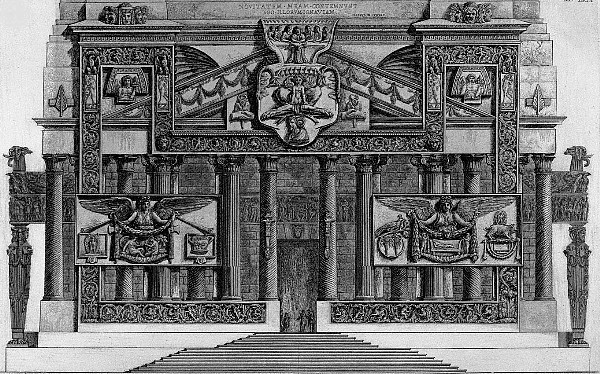2015.08.16 19:48
Style of Texas homes in the 1980s
Perhaps look at some of the televisions shows of that era: Dallas, Knots Landing, Falcon Crest, Dynasty. Knots Landing was a kinda spin-off of Dallas set in Southern California. None of it Austin specific, but you'll get a real sense of wealthy 1980s residences.
2015.08.16 20:41
Architecture of Segregation
...can you begin to suggest what kind of solution architects can design that will effect the problem of geographic poverty concentration? What exactly is the relationship between geographic poverty concentration and architecture.
2015.08.17 10:46
Architecture of Segregation
...you wrote, " Housing can- and has been designed to respond to that and similar issues." By "that," I assume you mean 'the ability to improve economic standing'. If there indeed are such housing designs, then listing them would be an answer to what architects can do.
Conversely, designing is the easy part. Are there indeed some architect designed housings that have been built and that have subsequently improved the occupant's economic standing? Thus again, if there indeed are such built housing designs, then listing them would be an answer to what architects can do.
2015.08.17 12:37
Architecture of Segregation
...yes you provided examples, but the issue of "architect designed housings that have been built and that have subsequently improved the occupant's economic standing" remains.
As to "the concerns of architecture," architecture itself is indifferent, e.g., an old urban rowhouse can be a family home or a crack house, an unfinished hi-rise can remain unfinished or it can be(come) a quasi-anarchic home full of squatters, Villa Savoye was for a short time a modernist residence, then a decrepit farm building, and now a kind-of museum.
2015.08.17 13:00
Architecture of Segregation
"Public spaces and buildings accessible to all, fair distribution of urban systems, health and educational services, public transportation, homeless sheltering, walkability of streets, architecture which compliments social equity, well-being and public engagement. Places that generate local economic opportunities and employment. Sustainable cities with stable and affordable housing and healthy non-speculative growth."
Architects can (maybe) design some (actually just a few) of these things, and, moreover they certainly cannot guarantee any of these things. A lot of the list actually requires legislation first, and then major financing, all of which is outside of and prior to any architect's involvement.
Lobbying for legislation is perhaps the most an architect can do (but lobbying these days requires a lot of (time and) money in and of itself).
| |
2015.08.17 13:12
Architecture of Segregation
...I understand all that. My point, however, is that none of that is solely linked to architects and what they do. It's all mostly governing policy and major financing.
2015.08.17 13:21
World Trade Center Plans
It's not a matter of possessing the "drawings;" it's a matter of legally making money from the drawings. (My guess is...) If a judge deems the contents of the 'drawings' to be intellectual property protected under copyright law, then the possessor of the intellectual property rights has rights to any money made from the sale of such intellectual property.
2015.08.17 14:36
Architecture of Segregation
...the investigation, evaluation, consultation, and advice portion of architects’ professional services are all services that a client pays an architect to do. Are you suggesting that these services should gradually turn into pro-bono services?
2015.08.17 18:03
Architecture of Segregation
...I say pro-bono because I don't see much possibility of any client going to an architect to ask them to investigate if the client's proposed project will somehow effect geographic poverty concentration, nor do I see much possibility of any client going to an architect to ask them to evaluate if the client's proposed project will somehow effect geographic poverty concentration, nor do I see much possibility of any client going to an architect to ask them to consult if the client's proposed project will somehow effect geographic poverty concentration, nor do I see much possibility of any client going to an architect to ask them to advise if the client's proposed project will somehow effect geographic poverty concentration. Moreover, it doesn't seem ethical for architects to have a predetermined agenda when offering consultation services--you don't go to a lawyer to ask for their personal opinion; you go to a lawyer to find out the actual legality of a given situation.
I suppose architects are free to advocate any cause, but it doesn't seem correct to assume that advocacy is somehow a billable service.
2015.08.21 17:12
We're suckers for any architecture that looks like us
...what you just wrote strikes me as not true at all. After 45 years of studying architecture, from ancient to modern, I have never come across the notion that "Classical architects have always intentionally made buildings that resemble us," nor have I seen such a notion in the architecture itself. Like that article about beautiful college campuses, your statement is more a product of propaganda than actual historical fact.
2015.08.21 19:18
We're suckers for any architecture that looks like us
I'm curious as to which architecture schools in particular do not espouse a spirit of diversity.
| |
2015.08.22 17:08
We're suckers for any architecture that looks like us
...what you just wrote is not the same as "Classical architects have always intentionally made buildings that resemble us." There are instances of anthropomorphism, yes, implicitly encoded at best. Actual resemblance, no.
Joseph Rykwert, The Dancing Column: On Order in Architecture is probably the best study of implicit anthropomorphism in Western architecture.
Regarding human proportion in ancient Greece, it's the elusive Canon of Polyclitus. I did a bit of research into the Canon of Polyclitus almost 40 years ago now, and I came to my own conclusion that it was this.
Classical architecture is much more the product of proportions in conjunction with geometry then it is proportions in conjunction with the human form.
2015.08.22 17:47
We're suckers for any architecture that looks like us
Saying that, "Classical architects have always intentionally made buildings that resemble us" is just wrong. That's a platitudinous generalization that is misleading and plain false. The best you can do is show us how your classical architecture is always intentionally made to resemble us. Can you show us that?
2015.08.23 12:02
We're suckers for any architecture that looks like us
Over the history of classical architecture, from antiquity to the present day, a prevailing theme and rationale for the language has been IMITATION, either explicit or implied. This is not accidental, but has been part of the written philosophy of classical architecture since antiquity.
2015.08.23 13:56
We're suckers for any architecture that looks like us
And imitation is the prevailing theme and rationale of the language. Anthropomorphism is not a prevailing theme or rationale of the language, nor as extensive throughout the language (as you believe it to be).
  
Personally, I'd like to see 21st century classical architecture proceed from Piranesi's (1765) theme and rationale of classical architecture imitating classical architecture with a strong collagist sensibility.
| |
2015.08.24 09:56
We're suckers for any architecture that looks like us
Is 'Redrawing History' the same as pattern recognition?
2015.08.24 10:25
Thread Central
 
|